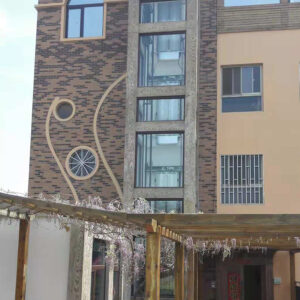The design of a home lift plays a crucial role in ensuring efficiency and seamless functionality. Every aspect, from the conceptualization to the installation phase, must be meticulously planned and executed. In this article, we will explore the key factors to consider for an efficient home lift design, highlighting the advantages and application fields that customers pay attention to.
Table of Contents
Toggle1. Space Optimization and Compact Design:
Efficiency in home lift design starts with effective space management. Homeowners often prioritize maximizing floor space while still enjoying the convenience of a lift. One crucial factor to consider is the compact design of the lift, enabling it to fit comfortably within the available space. By utilizing innovative technologies and thoughtful engineering, home lift manufacturers have been able to create sleek, space-saving designs. For example, incorporating a machine room-less design allows for greater flexibility in installation, as it eliminates the need for a dedicated machine room.
2. Energy Efficiency:
In today’s environmentally conscious world, energy efficiency has become an essential consideration for any modern home lift design. Manufacturers strive to develop lifts that consume minimal energy while delivering optimal performance. Cutting-edge control systems and efficient drive mechanisms can significantly reduce energy consumption, resulting in lower electricity bills for homeowners. By utilizing regenerative drives, the lift can harness and reuse energy generated during descent, further enhancing its energy-saving capabilities.
3. Smooth and Quiet Operation:
An efficiently designed home lift should provide passengers with a smooth and quiet travel experience. Noise reduction techniques, such as insulating materials and advanced motor systems, ensure that the lift operates silently, without disturbing the peaceful ambiance of a home. Additionally, incorporating advanced suspension systems and shock absorbers minimize vibrations, adding to the comfort and safety of passengers.
4. Safety Features:
Safety is paramount when it comes to home lift design. Customers pay close attention to the safety features incorporated into the lift to ensure the well-being of their loved ones. A comprehensive safety system should include emergency stop buttons, anti-slip flooring, emergency communication systems, and advanced door safety sensors. These features provide peace of mind and reassurance to users, promoting a safe and secure travel experience.
5. Customization and Aesthetics:
Homeowners often seek a harmonious integration of the lift within their living spaces. The design should align with the overall aesthetic of the home, offering customization options to suit individual preferences. Whether it’s choosing the materials, finishes, or control panel designs, the ability to personalize the home lift allows homeowners to create a seamless and visually pleasing environment.
An efficient home lift design encompasses several crucial factors that prioritize space optimization, energy efficiency, noise reduction, safety features, and customization options. By considering these key factors, manufacturers can develop lifts that not only meet the practical needs of homeowners but also enhance the overall experience of vertical transportation within residential spaces. The advancements in home lift technology continue to transform the way we perceive modern living, providing convenience, accessibility, and peace of mind to homeowners around the world.


